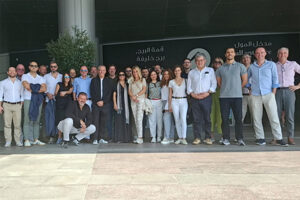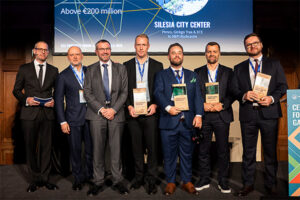BY CHRISTOPH M. ACHAMMER
Cardinal errors in matters of orientation, sector mix, and customer circulation have just about disappeared. On the other hand, however, the tendency towards absolute interchangeability has increased strongly. This, in parallel with the successful creation of European branch networks by many tenants, is leading to the danger of thoroughly professional, high-quality “more of the same.”
This should set us thinking and prompt us to search intensively for innovations. My belief is that these could be found in the following areas:
Multifunctionality: Knowing full well that the investor community does not like multifunctional real estate, it seems to me that multi-functionality is nevertheless the order of the day, especially for inner-city locations. The city is, after all, the aggregation of living, working, shopping and leisure and has finally overcome the “functional separatism” of the 1920s. If we are to take titles such as “from shopping center to lifestyle center” seriously, this must begin with the completion of multifunctional complexes, which facilitate both life and the living of this lifestyle.
Integration: The sealing-off of shopping centers from their surroundings, which continues to be practiced in large parts of the industry, must come to an end in every type of location, not only in inner-city settings in which it is easier to create openings in the urban fabric. I believe that true integration into the immediate and wider context will be essential for all shopping centers in the future, even for those on greenfield sites.
Virtualization: The IT world and the real world are currently merging in many areas at an extraordinary speed. In a few years, 50 billion “things” will be directly connected with the internet. This challenge, which for the shopping center industry remains relatively vague, must soon be addressed seriously. The only area where the pace of development is greater than that in the retail world is the area of IT and its applications.
Hybridization: We have been hearing about the hybrid customer for more than a decade. This breaking down of the barriers between the “luxury, full-price, and discount” sectors is not happening exactly as predicted. Yet the combination of these sectors in shopping center concepts remains the exception. In some countries, we can already see successful attempts to offer the same brand within the same center – in one location in the full-price segment and, elsewhere, with a factory outlet.
Localization: Internationally successful brands are, of course, an essential requirement for a successful center – but will they be enough in the future? One probable approach is successful differentiation through the involvement of local retailers, local produce and local cultural networks as a way of reducing the danger that outcomes in Hamburg, Munich, Marseille, and Istanbul are interchangeable.
Building Culture: Last but not least, a further key to uniqueness is our ability to address seriously the need to contribute to the building culture of a rich, affluent society. As well as meeting the need for utilitas (useful) and firmitas (solid), this means that we must also deliver venustas (beautiful). However, this cannot always be achieved with an economic argument alone and requires a necessary touch of entrepreneurial “patronage” in the decisive phases of designing and building.
My view is that, whatever the location and the brief, whether new-build or refurbishment and regardless of the economic starting point, aspects of the above-mentioned, and all others, new areas of action are required if we are to breathe new life into a shopping center industry that has become somewhat lost in a blind, innovation-free alley.
What is your opinion on this topic? Discuss it with us! Send your opinion to opinion@across-magazine.com !






